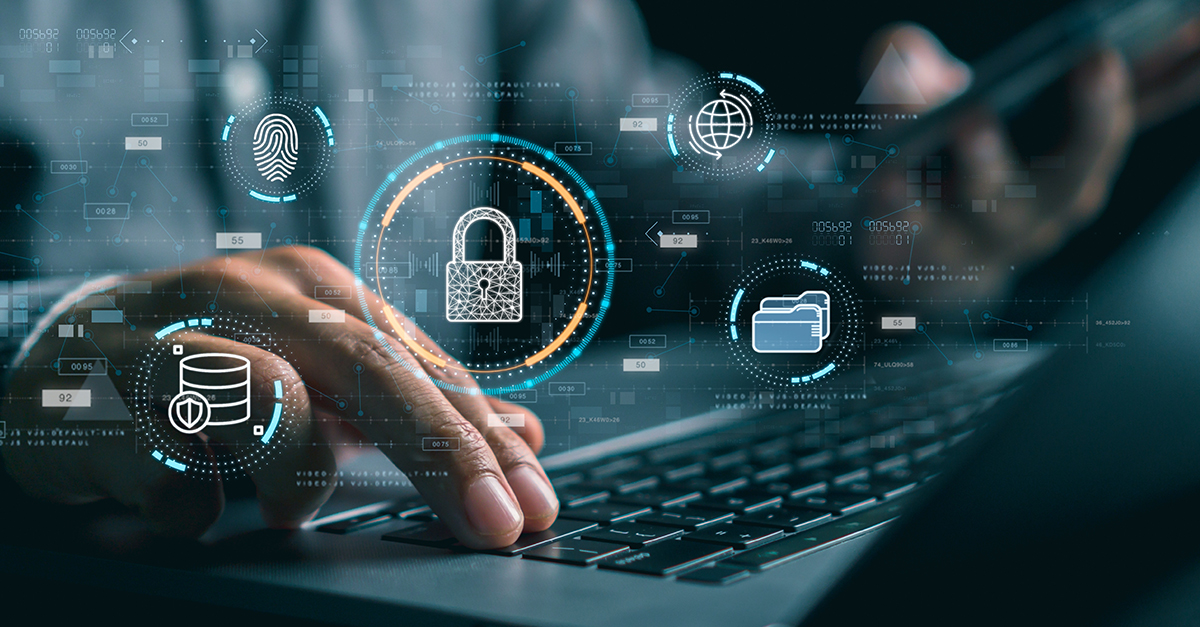
Why is Data Identification a Crucial First Step for Compliance?
Have you ever wondered how companies ensure compliance with regulations and laws when handling sensitive data? It all starts with data identification.
Data privacy and security have become increasingly important in recent years, with numerous high-profile data breaches and regulations such as GDPR and CCPA coming into effect. Companies must first identify their data and where it is stored to comply with these regulations.
Data identification is a crucial first step for compliance, as it helps companies understand the types of data they have, and the risks associated with it. In this article, we will explore why data identification is so important, the challenges that come with it, and best practices for implementing a data identification strategy.
Table of Contents
The Information Explosion and Data Identification
In today’s technological era, we are witnessing an explosion of information on an unprecedented scale. Daily, enormous amounts of data are generated, stored, and shared across various platforms and devices. While this proliferation of data has given us unparalleled access to information, it has also brought many concerns about data privacy and security.
In this context, data identification has emerged as a crucial first step for compliance. Data identification refers to identifying the sensitive information an organization possesses and pinpointing its exact location. This could include social security numbers, email addresses, medical records, billing records, clinical trial records, vehicle identifiers, and even biometric identifiers.
Regulatory compliance requirements necessitate organizations to understand the sensitive information they possess and take appropriate measures to safeguard it. Failure to do so could result in hefty fines, damage to an organization’s reputation, and legal liabilities.
In addition to regulatory requirements, the potential harm that can arise from data breaches is severe and far-reaching. Bad actors can use sensitive information to carry out identity theft, financial fraud, or even terrorist financing. The repercussions from such incidents can be devastating, resulting in significant financial losses and, even more concerning, harm to individuals.
Data identification is also crucial for practical risk assessment. By clearly understanding the sensitive information an organization possesses, security teams can develop a comprehensive risk profile, identifying potential vulnerabilities and taking steps to mitigate them.
Furthermore, data identification is critical for lifecycle management. As data moves through various stages within an organization, there may be changes to its classification, access permissions, and retention policies. Ensuring consistent compliance with regulatory and organizational requirements can be challenging without proper data identification.
Given the wide range of sensitive information types and the significant potential harm that can arise from data breaches, it is clear that data identification should be a top priority for organizations. This crucial first step towards compliance requires additional time and resources but is ultimately necessary for the security of individuals and organizations.
Why Is Identity Verification Important?
In today’s digital age, identity verification has become crucial to many processes. From creating bank accounts to signing up for social media accounts, identity verification is required to ensure the user is who they claim to be.

So, let us look at why identity verification is so important.
1. Fight Financial Crime
Financial crime has several forms, from money laundering and tax evasion to insider trading and cybercrime. These activities harm the victims and compromise the integrity of the financial systems we rely on. It is time to stop ignoring the issue and start taking action.
One crucial step in the fight against financial crime is data identification. By correctly identifying and verifying the parties involved in financial transactions, we can reduce the risk of fraud and prevent bad actors from exploiting the system. Advanced technology platforms now combine artificial intelligence and graph analysis, which allows the detection of complex patterns and relationships among entities.
2. Reduce fraud
Fraud is a global problem that affects us all, whether we like it or not. It is one of the most significant threats to the stability of our financial systems, and the consequences can be severe. By reducing fraud and increasing security, we can protect ourselves and our financial future.
One crucial step in reducing fraud is data identification. It may sound simple, but properly identifying and verifying the parties involved in financial transactions can go a long way in preventing fraud. By using advanced technology platforms that combine artificial intelligence and graph analysis, we can detect complex patterns and relationships among entities, making it harder for fraudsters to go undetected.
3. Create Trust Between the Customer and Businesses
In today’s digital age, creating trust between customers and businesses has become more critical. With so much personal information being shared and stored online, consumers are rightfully concerned about the security of their data. And with frequent reports of data breaches and cyber-attacks, it is understandable why trust between businesses and customers might be at an all-time low.
However, the truth is that with trust, businesses can succeed. When customers do not trust a business, they are less likely to purchase or do business with that company in the future. This lack of trust leads to negative word-of-mouth and online reviews, harming a business’s reputation and, ultimately, its bottom line.
Transparency in data identification plays a large role in building trust. Businesses need to be upfront and honest about collecting and using customer data. They should clearly explain their privacy policies and ensure that customers have control over how their information is being used.
4. Avoid Penalties for Non-Compliance
As businesses navigate the ever-changing regulatory compliance landscape, they must remain vigilant to stay compliant. Failure to adhere to relevant regulations often leads to significant penalties, fines, and legal action – all of which can wreak havoc on a business’s reputation and financial stability.
The risks of non-compliance are vast and far-reaching, impacting everything from data privacy and security to labor laws and environmental regulations. Failure to comply with these regulations often leads to financial penalties that can quickly add up, draining a business’s resources and undermining its financial health.
Further, it is not just about money. Non-compliance often causes reputational damage, loss of customer trust, and legal action that can impact a business’s bottom line. In some cases, non-compliance can even result in criminal charges that can put business leaders behind bars.
In light of these risks, businesses must take a proactive approach to identity verification. The critical first step toward compliance is ensuring you know what data your business generates, processes, and stores. Only when you clearly understand your data can you effectively implement the necessary security measures to protect it and ensure that you adhere to relevant data privacy and security regulations.
Data Identification Done Right
Data identification is crucial for any business that wants to remain compliant with increasingly complex and stringent regulations while also safeguarding the privacy and security of its customers’ information.
In the era of big data, where the volume, velocity, and variety of data are increasing at an unprecedented rate, data identification has become crucial for businesses that want to make sense of the information they collect. With so much data available, it can be challenging to identify relevant information and separate it from irrelevant data. Data identification is crucial to ensure businesses can derive valuable insights from their data, allowing them to make informed decisions. Furthermore, it can help companies comply with various regulatory requirements linked with data privacy and security, as data identification can help to identify sensitive information and ensure that it is protected appropriately.

However, not all data identification approaches are created equal. Data identification can be a potent tool for ensuring regulatory compliance and protecting sensitive information from bad actors.
What Does It Mean to Do Data Identification Right?
First and foremost, it means taking a comprehensive approach that examines every aspect of your data lifecycle, from creation to storage, classification to eventual deletion. This means identifying what data you have, where it comes from, who has access to it, and how it is used. Only when you completely understand your data can you effectively mitigate the risks associated with its collection and processing.
Another critical element of effective data identification is staying updated with the latest regulatory requirements. Regulatory landscapes are constantly evolving, and what was compliant yesterday may need to be compliant today. This means businesses must be vigilant in monitoring regulation changes and adjusting their data identification strategies accordingly.
It is also important to note that data identification goes beyond regulatory compliance. In today’s landscape, businesses are increasingly held accountable for protecting their customers’ sensitive information from cyber threats. Companies can better safeguard against data breaches and other cyber incidents by taking a proactive approach to data identification.
Data identification done right is not just about regulatory compliance but a holistic approach to protecting sensitive business and customer data. It means staying current with evolving regulations, taking a comprehensive view of your data lifecycle, and proactively mitigating cyber risks. By investing in effective data identification strategies, businesses can avoid costly regulatory penalties, safeguard their customers’ trust, and protect the bottom line.
Insight into Standard Data Identification Processes
1. ID Document Verification
In today’s digital world, identity theft is a growing threat. With more and more personal information being stored online, it’s becoming easier for cybercriminals to steal and impersonate identities. This is why ID document verification is crucial, not just for businesses but for individuals as well.
ID document verification, also known as identity verification, is verifying the authenticity of a person’s identity documents. This can include passports, driver’s licenses, and national IDs. By verifying the document, businesses, and organizations can ensure that the person presenting it is who they claim to be.
ID document verification has become even more critical in recent years, with the rise of the so-called “digital nomad” lifestyle. With more people working remotely and traveling the world while doing so, businesses need to be able to verify the identities of their remote workers. This is especially important for those working in industries like finance and healthcare, where regulatory compliance is critical.
Businesses are just some who need to be concerned about identity verification. Individuals can also benefit from these services, especially when protecting themselves from identity theft. With identity theft on the rise, taking proactive steps to protect your personal information is becoming more critical. By verifying your identity documents, you can be sure that no one else is using your identity to commit fraud.
So, how does ID document verification work? Typically, it involves uploading a photo of your ID document and a selfie. The service will then compare the two images to ensure they match and verify the document for any signs of tampering or fraud. Some services may also ask for additional information, such as your address or date of birth, to verify your identity further.
While some may see ID document verification as an invasion of privacy, it is essential to remember that it is in everyone’s best interest to ensure that identities are verified. By doing so, we can protect ourselves and our businesses from the devastating effects of identity theft. So do not be afraid to embrace ID document verification – after all, it is better to be safe than sorry.
2. Biometric Verification
Regarding identity verification, biometric verification is quickly becoming the go-to solution. By 2023, the global biometric verification market is projected to reach a staggering $24.8 billion.
What exactly is biometric verification, and why is it so important? Biometric verification involves using unique physical characteristics, such as fingerprints or facial recognition, to verify someone’s identity. Unlike traditional verification forms, such as passwords or PINs, biometric verification cannot be stolen or forgotten.
This makes biometric verification particularly useful in industries such as finance and healthcare, where protecting confidential information is critical. Also, with the growing use of mobile devices and remote work, biometric verification can provide another layer of security for those on the go.
However, some concerns have been raised about the potential misuse of biometric data and the accuracy of these systems. It is essential for companies and organizations to prioritize the protection and ethical use of biometric data and to ensure that their systems are reliable and accurate.
Overall, biometric verification has the potential to revolutionize the way we verify identity. However, it is essential to approach it with caution and responsibility to ensure that it genuinely serves the needs of individuals and organizations.
3. One-Time Passcode (OTP) Verification
Are traditional methods of identity verification becoming obsolete? With data breaches and identity theft rising, it is easy to understand why many organizations are exploring alternative verification forms, such as One-Time Passcode (OTP) verification.
OTP verification involves sending a unique code to a user’s device, which they must enter within a set timeframe to access a system or complete a transaction. This method adds a layer of security, as the code is only valid for a short period and cannot be reused if intercepted.
Is OTP verification the answer to our identity verification woes? While it certainly has its benefits, such as ease of use and low cost for implementation, there are also concerns about the reliability and security of this method.
For example, if a user’s device is lost or stolen, an unauthorized person could potentially access the OTP code and gain access to confidential information. Additionally, bad actors can sometimes intercept or manipulate OTP codes, leading to potential security breaches and data theft.
That being said, OTP verification can still be useful when implemented correctly and with other security measures. It is also worth noting that OTP verification is one of many alternative verification methods available, and different organizations may find different methods more effective for their specific needs.
As we navigate the ever-evolving landscape of security and identity verification, it is important to continue exploring and improving upon alternative methods to ensure the protection and privacy of our sensitive information. One thing is sure – traditional methods alone are no longer enough to keep us safe in the digital age.
In conclusion, identity verification is an essential component of modern business practices. By implementing identity verification processes, businesses can prevent fraud, protect sensitive information, and comply with regulations. While some may argue that it is an invasion of privacy, the benefits of identity verification cannot be ignored.
Conclusion
In the fast-paced digital landscape, where data privacy and security are paramount, the importance of data identification and identity verification cannot be overstated. This article has delved into the critical role of data identification as the foundational step for regulatory compliance. As businesses struggle with the challenges posed by an information explosion, understanding the types of data they possess, and its inherent risks becomes imperative.
Furthermore, identity verification has explained its multifaceted significance in fighting financial crime, reducing fraud, building trust between customers and businesses, and avoiding penalties for non-compliance. The shift towards advanced technologies like biometric verification and OTP verification underscores the evolving nature of identity verification methods.
In essence, the implementation of data identification processes, such as ID document verification, and embracing evolving identity verification methods contribute significantly to securing sensitive information and complying with regulatory frameworks. While some may perceive these measures as an invasion of privacy, the collective benefits of fraud prevention, protection of sensitive data, and adherence to regulations underscore their necessity.
As we navigate the complexities of the digital age, businesses must recognize that traditional methods alone are insufficient. A holistic approach that combines comprehensive data identification strategies with evolving identity verification methods is essential to ensure the protection and privacy of sensitive information. By investing in these practices, businesses not only fortify their defenses against cyber threats but also foster a trustworthy environment that is vital for sustained success in the modern business landscape.




